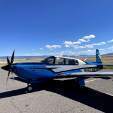Leaderboard
Popular Content
Showing content with the highest reputation on 12/28/2020 in all areas
-
Since @VinceCB took 2711W away we’ve been searching high and low for a new airplane. Flirted with Rockets, considered C180s, got disappointed by the state of most PA-30s and came very close to joining the cult (Bonanza ownership), right under my nose appeared my new ride. ’83 model 231 with a 262 conversion and TKS. Low times, by high time sitting. Waking it from its slumber and so far so good. Small fuel seeps, could use a few new hoses. Fingers crossed about the health of the bottom end. Seems to fly straight. Not sure about performance yet. Expect lots of questions about engine management. Still stuck below 10,000 until I get ADS-B installed.6 points
-
This is a fascinating thread! Hearing the rumors and listening to what people think is simply way freakin' cool ... and sometimes scary. As it turns out, I have done a few of these gross weight increases while working for an OEM, and I am in the process of doing another one right now for Blue on Top LLC. As has been mentioned above by different posters, there are several areas that need to be addressed: structures (wing positive & negative bending, landing, etc.), performance (takeoff, landing, stall speeds, etc.) and others. It might very well be "just paperwork"; it might not. From a Flight Test standpoint, 10% is typically the maximum amount that is allowed without new test data being required. As @PT20J mentioned, OEMs (Mooney in this case) and STC holders (Rocket Engineering) typically won't give out free data ... nor should they. It would bring unnecessary liability to them. Sometimes there are ways around this.4 points
-
Engine was overhauled by Devine Airport Group. Pressurisation system working ok. System is quite simple with the turbo feeding the cabin. Regulation through two outflow valves through the rear bulkhead. Valves have been overhauled and recalibrated by the manufacture in the US. Max differential pressure is 4.2 PSI with a cabin altitude of 8,000 ft at 24,000 ft (max ceiling).4 points
-
Hello to all of you....... A few more words on the M22. Aircraft was repainted from bare metal in a small paint shop close to London in 1992. The M22 has always been hangared and the paint still looks very nice. Polished every year for the last 20 years !! Engine overhauled in the US. Project completed in 2016. Long project but fully documented. Engine has now around 150 hrs since overhaul and runs like a dream. I tried to keep the aircraft as original as possible. Installed a EDM 900 as primary to avoid to be grounded in any problems with the old gauges. All still running ok. Also installed a new Garmin 330 ES transponder to be complying with the latest requirement in Australia. I know that there is M22 in South Africa. I was in contact with the owner a few years ago. The aircraft did not fly for around 20 years now. One M22 also in Switzerland. A few photos taken this afternoon (except the one in the air) ....4 points
-
I got to use mine as a real airliner last week when I did KFXE to KBED nonstop (1200 miles) in 5.5hrs! I’ll take an oxygen mask over a blue paper mask any day of the week.3 points
-
And thus begins the eternal debate any time we all bring up the potential for a gross weight increase on the older J’s/F’s... should it be allowed based on subjective assessments of “is it safe/smart?” some like the opportunity/flexibility that having the options- provided that the pilot knows the limits/performance... brings. others say “I’ve flown a J/F and the extra 100-200 lbs would be way to dangerous in conditions X,Y,Z.” my thoughts are this: to certify the aircraft to that max gross weight, it would have to comply with normal aircraft category standards. A pilot must also take accountability for their actions/understanding of how to fly their airplane. the newer J’s are certified up to 2900 lbs... if it’s proven that the older ones and possibly even F’s are rated up to that weight... I don’t see why anyone would feel any less comfortable flying up to those weights in the older models. But the paperwork/research still needs to be completed to legally “get there.”3 points
-
I recently left a msg with Paul at weep no more, I'm the guy doing major structural work and have the horrible urethane stc on my aircraft. Paul called me back, chatted with me for a long time and answered many technical question. If I have some tank work, I'm sending to him. He earned my business by returning my call and by Sharing his wealth of knowkedge. There is usually a cost savings in the long run by going with the best. G3 points
-
Merry Christmas to me! Some of you might remember that back in March I detected an oil leak on 34X and on April 10 we confirmed it was a cracked engine case on cyl #2. ‘Twas a sad day indeed. Especially since I had bought and flew it home Jan 1 and only had 15.2hrs in the plane. While the engine was out I did a bunch more work to the plane because I wanted to make the best of the down time. It took so long to get the engine back in and buttoned up that we ran into the next annual timing and so now this is all ending up adjacent to this years annual. I want to say thank you to the MooneySpace community for all of your guidance and advice. This forum is invaluable to those like me trying to keep these vintage plane airborne The list I’ve been keeping of the work done since that April: Remove, repair, replace the engine. They did a gear ad. Install Oil filter. Cam. DLC Lifters. New superior case. Added JPI fuel flow transducer New fuel supply line Install new fuel lines to servo and JPI fuel flow transducer and from electric to manual pump. New mixture and throttle cable Replace mixture ball end at servo with rod end kit part number 660051-005 Replaced ram air cable mount bracket and bushing at mixture mount on engine to support the cable properly. Old bracket was a bent thin steel plate with no bushing and it wore though the cable. Pilot side sceet tubing installed and old worn out stuff removed. Instrument panel renovation. Install transponder and ASDB-IN AHRS box. Mount GPS antenna and route wires Install stratus USB. Removed two cigarette lighters Install nulight stc ring lights Install primary gage LED lights Remove mitchel turn and bank and install MidCont turn coordinator Replace Wing Leveler Aileron servo boots in the wings. Replace rudder servo boots for brittain accutrak autopilot system. Replace step retract servo unit with good serviceable. Overhaul nose gear truss assembly. Sent to Lasar: -Exchange truss with unit overhauled by Lasar with turn limit feature STC from Lasar. -replace nose lord bushings -install spacer to preload bushing to improve ground tracking (Mooney SB) -Realigned nose gear Repair and paint interior window trim Repaired and painted cabin side walls. Installed new carpet in floor, lower walls, and luggage compartment with carpeted panels, re apolstered arm rests and entry door windlace from Airtex. Replaced entry door plastic and painted to match. Install Johnson bar boot Stop drill firewall cracks and seal with permatex. New spark plugs: UREM-38E One Mag repair/overhaul Zerk replacement front and main gear Insect yoke tubes Check fuel filter screen Replace fuel cap o-rings Connect compass light power Install new front seat belts and shoulder belts ADs completed on motor mount by Loree air. Installed JPI fuel flow transducer. Replaced 2 motor mounts. Moved lower to upper and installed new ones in lower.2 points
-
Another vote for the Mountain High O2D2 EDS units. It's by far the most efficient--more so than the oxymizer + flowmeters and much more so than the factory constant flow. At ~$100 per O2 fill in your K, it should pay for itself eventually. With the EDS, you don't need a special conserver cannula. Any regular cannula (albeit with the right narrow tube at the end) will work; they cost about $8 from MH directly. To use the EDS with ship O2, you'll also need an appropriate regulator. Here's the kit that includes everything: https://www.mhoxygen.com/product/o2d2-x-str/ The regulator has a Scott fitting inlet on one end and the outlet to the EDS on the other. I also have a USB power cable which powers the EDS unit, so no batteries required. If you're cheap like I am, email MH and ask if they have any refurb units. They have them on occasion and practically speaking they're as good as new. One upside of the portable system is that O2 from welding supply stores is cheaper. There used to be a difference between medical, aviation, and industrial O2, but no longer. This can also save money over getting O2 from the FBO + recurring inspections for your factory O2. If you already have a factory system installed though, might as well use it since you're already taking the hit on weight.2 points
-
With reference to ".. and beyond" in the thread's title enclosed an opportunity in Germany: "Westflug Aachen" located at EDKA has two M20J for rent. Aachen is situated at the western border of Germany right next to Netherlands and Belgium. D-EOWS was recently repainted and (afaik) received an avionics upgrade including EDM engine monitor and G5 instruments (the latter maybe under works). The images shown on the website are outdated and do not reflect the recent upgrades: http://www.westflug.de/index.php/flugzeugpark/mooney-m20-j D-EMOH http://www.westflug.de/index.php/flugzeugpark/d-emoh Considering the fact that the associated flight school "Westflug Flight Training" is re-establishing IR training, at least one of the aircraft (if not both) are IR certified. Checkout is performed by one of the flight instructors. I'm aware of at least three of them being very skilled at Mooney specific training (including short-field because EDKA only had a 520m/1710ft runway until this summer). The boss of "Westflug" is a former German acrobatics-champion in the unlimited class. (Besides the aforementioned Mooneys and other typical GA aircraft they also operate one or two Extra 330LX. If you are interested you could receive introductory acrobatic training or UPRT training on Extra aircraft as well... http://www.extrabatics.de) Best, Matthias Disclaimer: I made my PPL and received my Mooney training at this flight school.2 points
-
As we both know, legal does not equal safe and safe does not equal legal. Any pilot that’s not straddling the line that ensures both those requirements are met may come to grief (physically or legally). This is the case whether the airplane has a gross of 2740 or 2900. We all occasionally have to use ADM to get through the “yes this is legal but is it smart?” process. I agree that a max gross weight increase would require additional consideration by the pilot. However, we’re talking <6% increase and there are many factory versions of this airframe and power plant that have been flying for decades with the 2900lb limitation. Seems like it would be low hanging STC fruit compared to some of the other endeavors undertaken by STC applicants. I dislike scenarios that may encourage illegal behavior. This is just the type of scenario that some pilots might use as an excuse to load over gross. If the difference is indeed only paper work, that can be used b a pilot to rationalize what they perceive to be “safe but not legal” behavior.2 points
-
Ron Dubin owns that one now. Full disclaimer, Ron owns 2 other Mooney's and is cofounder of the Mooney Summit.2 points
-
Ron, my Mark I sphincter gauge has a couple of the non fiki planes for sure making book. N281TA an Ultra Acclaim, and N914BC an older ovation were fast examples. N311TN I am sure would also, but she was Captain Mikey's development plane. Typically, I dont run em up to FL25 for a speed check, and rarely get into the FL's at my age. Here is one of the Ultras 50 LOP at 10K2 points
-
Yes and the G onset rate was said to be the fastest in the USAF. It would really turn when you pulled... for about 90 degrees, then the tremendous increase in drag would overcome the tiny little “dog whistle” engines and the airplane would turn into a PA-160. No G suits, so you had to be ready on the G strain or you’d be asleep in those 90 degrees. Parachute was actually on your back too. Wore it out to the jet. It did have an ejection system but it was pure 1950s. It worked but at low altitude you were likely toast. It had a special lanyard to connect when you were at pattern altitude and below that would skip the safety of a 2” delay for separation of the two seats and immediately pull the chute upon exiting the airplane. The engines were so loud that you had to wear both in ear and over the ear hearing protection on the flight line. Apparently they converted JP-4 into noise, but not thrust. Spinning the Tweet was great too. She was an honest airplane, and if you stalled with yaw, hold on tight! There was no “neutralize the controls” recovery that the new trainer uses, the Tweet required adherence to 4 very specific steps or she would just keep on spinning while you watched the altimeter unwind and wondered how well the 1950s ejection seat would work. Power, idle. Ailerons neutral. Rudder full opposite direction of the spin. Stick abruptly full forward. And by “abruptly”, they meant slam it into the instrument panel as hard as you can. After the spin definitely stopped (and certainly not before), you might want to let off some of the forward stick or you’ll soon be IMC in the cockpit at -2 Gs and see 50 years worth of dirt and lost ear plugs.2 points
-
Verify you have the correct tire pressure, get it up on jacks, disconnect the gear door rods and retract the gear, you should be able to spin the nose wheel. If you don’t have access to jacks or don’t feel like jacking the aircraft, clean the suspect area and put masking tape over the area and go fly, the tape will now show the telltale if it’s rubbing. There are adjustable bushing that dictate how far up in the well the nose gear goes, service manual walks you through the process if needed2 points
-
2 points
-
Thanks. Eric, appreciate the time spent educating me on the Rockets. Just couldn’t find the right one. For such a small portion of the fleet, a lot of them seem to have lived colorful lives. I’ve known of this airplane for years, never thought I’d get the chance to be it’s caretaker. No expense was spared during its conversion. 337s read like a flying Mod Squad catalog. Not Rocket performance, but a definite step up in capability compared to the E. Now to understand how to run a TSIO.2 points
-
I currently have an F with a UL of 1058lbs. Taking it to 2900 would bring the UL to 1218lbs. As a mid-Atlantic flat lander, I’d be cautious loading that way in August but this time of year it would be fine. That’d be 208lbs per seat at full fuel. Would make a plane that is a good load hauler one of the best.2 points
-
One thing that can annoy existing owners... 1) Sell them today’s product, at today’s price.... 2) Don’t tell them a new version is in the wings for next year.... 3) the disappointed consumer will remind you of that for the next decade while they still own the plane... 4) back in the day.... Mooney marketing was disconnected from the laws of physics... 5) More in tune... With an extravagant cover story... 6) Things were moving forwards at an incredible pace... 7) The documents, approvals, and engineering, and construction, all had a lag to it... 8) Many things took a year to develop and another year to show up in the type written POH... The one thing that will really benefit an owner when raising the MGTW... 9) A formal Transition Training program to go with that... 10) Full up with modern tools to support it... 11) a full understanding of DA, and its affect on T/O distance and climb performance will be more important than ever... 12) This point gets easily lost between aviation 101, and starting the T/O roll on a warm day... a year or two later... 13) Have the data, distribute the data, and the pilot being able to use the data... all need to occur... 14) It will be the most worthwhile training... 15) Use actual WAAS measuring tools to confirm the actual book numbers... (especially if you are a self study kind of person) PP thoughts only, not a mechanic or CFI... Best regards, -a-2 points
-
None of this really matters: The point is that there is no way to get gross weight increases without either complying with the type certificate or an existing STC. If someone thinks it’s a great business proposition to get a new STC to up gross older airframes then I’m all for it. Thus far, Mooney hasn’t wanted to bite that apple, but someone else might make a different ROI calculation. You probably could not get data from Mooney or Rocket — I’m pretty certain that is closely held as proprietary. @Blue on Top might have some idea as to the process and cost to get the data package for FAA approval. For me, it was just cheaper to buy the airplane that fit my mission. Skip2 points
-
Sounds good to me! An extra 165 lb would give me 822 lb full fuel payload!2 points
-
At max gross weight of 2740, my F is fine up to DA of around 5,000’ for takeoff but then I really start paying attention to runway length and terrain. During climb it’s ok at 2740 until around 10,000’, then its down to 200-500fpm. It also cruises noticeably slower at max gross. All of these factors start getting worse and harder to control when you add in thermals, turbulence, wind, etc which are common where I live. In my humble opinion, a gw increase for the F/J would reduce the safety factor too much and I wouldn’t do it. If I had a turbo or TN, then I could see it. It would probably still be safe at very low DAs, but I don’t think it would be a good idea for most of our operations. Why doesn’t someone get the C/E up to 2740? Basically it would be same as the F?2 points
-
3200 lbs for 196hp might be a bit heavy in my opinion. I flew the regular 244hp eagle at 3200lbs before I switch to the screaming eagle, and it was a hog on ground roll and climb was alright. With the screaming eagle with 310hp, and at 3368, it climbs great, and it could handle a higher weight for sure.2 points
-
The gross weight change happened at S/N 24-1686 which is coincidentally when the wall thickness for the lower tubes was increased. Since these tubes can be prone to internal corrosion (it’s the one called out in SB-208 for inspection with a magnet) perhaps someone has had experience replacing them. Looks to me like the wing might have to come off. Skip2 points
-
Thanks. I use the Mountain High O2D2 system. It's important to note that the masks/cannulas need to match the system you select. For example, the Aerox mask won't work with the MH O2D2 system. I like the O2D2 system for many reasons but the reason I bought it was to save on O2 refills. Not that O2 is expensive, but it's a hassle to have to refill it after each trip. Now I get three or four trips out of each refill. When I'm above FL180 I'm wearing the MH Mask with the Mic built in. It's easy to drop my Halo headset down around my neck and wear the mask unobstructed. It's surprisingly comfortable even on the long trips. I also like the reassuring sound the O2D2 makes with each breath. Just like a SCUBA regulator as @exM20K said, there is a burst of air with each breath. If I don't hear the sound, I'm immediately checking to make sure O2 is flowing.2 points
-
As a former owner of an F, in my humble opinion with a useful load of over 1000#’s. I did not need another 160# useful load. would the airplane handle it, yes. Add density altitude to it, it would be just so so. I rejected one takeoff and spent the night in Gallup NM. I was well below gross weight, approx. 450#’s below gross. The next morning, 15* cooler the plane wanted to fly and we went. Most of my flying was in the western half of the country. Home base was at 2250’ with mountains around and summer density altitudes of 5000’. Just an old conservative pilots opinion.2 points
-
For the mask, I’d spend the money on one with a microphone built in. https://www.aerox.com/4110-712-microphone-mask-assembly-approved-to-tso-c103/ A little more up-front money saves on refills and is much more comfortable. https://www.mhoxygen.com/product-category/portable-pulse-demand/o2d2/ I have their boom cannula mounted to my Bose A20, and that is very satisfactory. the pulse systems work like a SCUBA regulator. They pulse a blast of air when you inhale rather than running constantly. It is much more comfortable and way less drying. your factory system uses Scott fittings. -dan2 points
-
How high have you taken her? Is she calm in the cabin or noisy? My father was one of the engineers on the M22. He advocated for a completely new fuselage design and actually drew plans for one. He said the roll cage was just not conducive for pressurized operations. He was overruled by marketing he says because the roll cage was a major appeal of Mooney. Interesting factoid about the 22 is that Mooney filed and was granted a patent on the cabin door design.2 points
-
2 points
-
Update: 12/29 ALL: Unfortunately we jumped the gun on getting word out on this in our newsletter and here. Due to a permissions issue and another issue with the ignition fields our users can't update this information. Since I have all the information that needed, based on doing past analysis for our Mooney subscribers, current and many past, we're going to get your aircraft models correctly updated. That will leave the ignition fields and we'll circle back on that soon. So over the next few weeks all the Mooney subscribers will see their aircraft model updated, as needed. This won't apply to all, for example M20M's won't need updating - they were always special but most of you will get moved into a more specific Mooney Cohort to improve on reporting. Thanks! ---------------------------------------------------------------------------------------------------------------------------------------------------------------------------------- Savvy has changed the names it uses to identify the many variants of the Mooney M20-series aircraft to make them more accurate and specific to the Mooney M20 airframe/engine combinations. We were able to automatically update the model names for many of our clients, but not all. If you are a Mooney owner, please review your aircraft model name and edit if necessary, selecting the most appropriate one. It’s easy. Go here https://apps.savvyaviation.com/aircraft, click on “Actions” and select “Edit”. You will be presented with the new list of Mooney M20 model choices. Questions? Contact us at support@savvyaviation.com. The benefits of these changes will allow more accurate trend and report card reports since your cohort will limited to just aircraft with the same HP and fuselage length. (But not all of the new cohorts are supported with Trend analysis and Report Card reporting till reporting is able to catch up in time and a couple of these cohorts are presently just too small to support presently.) You can now also specify your Left and Right ignition along with these new Mooney Models. For example you can specify Surefly on one side and Bendix on the other. (Very shortly we'll also have pressurized mags as an option as well as the Bendix Dual Mag - which is not yet listed). Also, here is the current list of Mooney models names: M10 M18 Mite (L/C/LA/C-55) M20 (A/B/C/D) M20E M20G M20 (F/J) 200hp M20J Missile M20K (231) M20K (231 Aftercooler) M20K (Rocket) M20K (252) M20K (Encore) M20L M20M Bravo M20S 244hp M20 (S/R/U) 280hp M20 (S/R/U) 310hp M20 (TN/V) 280hp M20 (TN/V) 310hp M22 Mustang (Pressurized)1 point
-
As GeeBee said above the STC is airframe specific and can not be transferred without permission from the STC holder - usually for a fee. But why? The installation cost of the BK KAP-150 is going to very neat the same number of hours as the install for your GFC-500 - that's a lot of time and money. Can't imagine someone investing that in an older AP when it makes much more sense to spend those labor $ on a new much more reliable and far more capable AP. I don't think your friend realizes how expensive the labor will be even after he gets the STC transferred. In addition to labor the K computer has a different logic chip and servo part numbers may be slightly different between J & K installations. The servo's can likely be reconfigured but the he'd probably have to find a used ebay computer to get the proper logic chip for the K. (He can check the IPCs between the J and K model to confirm these differences in part #'s).1 point
-
1 point
-
I've also pondered this point. My E lists a very low unusable number so I looked at CAR-3 3.437 certification standards for Determination of Unusable Fuel and fuel system operation on low fuel. Certification required Slips, skids, transition from glide to Vy climb etc... The only way an E could pass this test with 3.4 lbs unusable is if the duration of the slips/skids were short enough that the engine was feed from the fuel remaining in the hose. I land with 10 gal min in the tank thats feeding engine. Also this has some good info on usable fuel testing for part 23 aircraft. Requires 30 second one ball width skids. https://www.faa.gov/documentLibrary/media/Advisory_Circular/AC_23-16A.pdf1 point
-
1 point
-
Might have a lot to do with the FAA, but dont know for certain. Ping Kevin H, he might know. Bob K might also.1 point
-
1. Throttles-idle 2. Rudder and ailerons-neutral. 3. Stick- abruptly full aft and hold. 3. Rudder-abruptly apply full rudder opposite spin direction (opposite turn needle) and hold. 4. Stick: abruptly full forward one turn after applying rudder 5. Controls -neutral after spinning stops and recover from dive.1 point
-
That limitation only applies to the LB mooney due to the landing gear. Since all J models have the same landing gears, and it is proven that they could handle the weight, I think it would be a somewhat pointless limitation. 3050 seems like a good weight that the IO360 could definitely handle. 3200 is too high in my opinion for sure. Any J or pre J will struggle at that weight. Especially with high DA's.1 point
-
One option is to only certify it for 2900 lbs on takeoff and let the 2740 lbs landing limitation remain, like the Acclaim. Then questions of strength of landing gear or steel frame are less important. Isn’t this the thinking about approving ferry tanks and overloading the plane on ferry flights ...fuel burn will reduce weight before landing?1 point
-
1 point
-
@exM20K Thanks for the great info! Will a stock airplane (without TKS) meet the POH numbers? Probably a question better answered by Ovation pilots. I don’t think there are many non FIKI acclaims. Mike E can answer. He has flown one or 2.1 point
-
Either look for a TKS Encore, or a TKS Eagle. FIKI is icing on the cake. If you plan to fly with 3 people consistently, you'll need the useful load, and if you're dealing with icing, that means your are flying IFR which means IFR fuel reserves, which means again useful load. I doubt a bravo with TKS will have the useful load you need to fly 3 hours with 3 people and bags. If you can't find that, TKS V35, F33A, or A36 will work as well. An SR22 will as well, however at a considerably higher price tag.1 point
-
Hank, my taste for/in coffee came, and changed, a lot like my taste for/in beer. Mom's coffee was weak, light with 1/2/ 'n 1/2, and sweet as marshmallows with sugar or saccharin. Dad's was a little stronger, barely lightened at all and only with milk (yuck!), and lightly "sweetened" (if you can call the twinge of saccharin that) with that awful, carcinogenic concoction. I got sips of both growing up, have escaped cancer thus far, and preferred mom's, but when I flew the nest in '86, I began to make my own with dad's strength, mom's 1/2 'n 1/2, just not so much of it, and a tsp. of SUGAR, of all things, per 12 oz. Tried going black in college, for simplicity's sake, but, just like with whiskey, could never stand the taste. Then, in '94, I came to California, and met Starbuck's. Hated it at first (eww! It's BURNED!), but it was the only legal source of narcotic stimulants around, so I acquired the taste. Met my Jet City woman in '98, (my email was EmbizoFlyer and hers was gotmocha...so...) and our tastes in coffee, as with so many other things, are identical. So yeah, for us it's Starbuck's French, Italian, Komodo, Gold Coast, or Sumatra, with enough 1/2 'n 1/2 to fill the cup to the rim, 3 Sugars in the Raw for a venti, 2 for a grande for me, and about half of a stevia packet per cup for her. I think Starbucks should make a t-shirt or hoodie with their logo and "Starbucks...enhancing aviation safety since 1985" on them. Bet they'd sell like, well, good coffee.1 point
-
Oooop! May have had a slip up.... I was thinking about starting a new company... called Missile Engineering.... We could increase the MGTW of all Mooneys... one at a time... May need an engineer, an STC writer, Chief pilot, and a sales guy.... PP dreaming out loud, not actually starting a company... Best regards, -a-1 point
-
1 point
-
1 point
-
- 2020 No particular goals but I did get a tailwheel endorsement - 2021 Pass 2,500TT. Maybe do the single engine ATP add on if I have a single engine airplane in 20211 point
-
Get back to closer to logging 200 hours, but that requires a lot more traveling. Tom1 point
-
Well not a Mooney flight but a great flight nonetheless. Flew in a Grob G109. Motor Glider or powered glider. So the flight was "officially hands off controls...." for me, unofficially/officially it was pretty awesome. Demonstrated some maneuvers flew over the practice areas and got quite the look at the greater Tokyo area. Was pretty clear could see the base of Mt Fuji, Skytree and Tokyo out in the distance. Flying is a different experience in Japan. So I went for a flight previously at a different airfield down the street from this one it was kind of a bigger business that wasn't all I'd hoped it would be but fun also. I spent some time chatting with the chief instructor then came time to fly. The instructor/PIC and I had a quick brief then off we went. Off the ground in about 400ft and climb out at 60knts 600FPM. Got up to altitude and got to turn off the engine and just soar for a bit work on airspeed/ maneuvers. Pretty cool and calm day almost no wind and no thermals. Started the engine did a semi low pass/ go around then climbed back up a few more maneuvers, then a power off landing come in high slight slip throw out some spoilers/ air brakes. After hanging out for a bit longer and swapping stories I was invited back tomorrow to go check out the shop and "factory" 2 separate places. Should be a good time. Both instructors said they had Mooney time and conversation flowed. I got to admit it was pretty cool with the engine off, but I told the PIC " this is about the only engine out situation Id like to be in." Didn't do very well in the picture/video taking but got a few. If I get the video(s) to upload will update post.1 point
-
I fly with o2 about 75 percent of my flight time. I am less tired, fewer headaches and fly better. I have learned a couple of things. I started by purchasing a pulse Oximeter from rite aid for $50. I commute to a job site and have to go over mountains with a minimum ifr altitude of 16k so I could compare my blood oxygen level each week. If I was short on sleep or tired levels would be low. I think that caffeine also had an impact but several doctors I queried said they knew of no research on caffeine and blood oxygen levels. Due to COVID there is now a lot more information on blood oxygen levels but I have used <90 as the low limit redline. Most doctors will tell you that your blood oxygen level should be the same at altitude as at sea level (or your home elevation). Bottom line every human has a different capacity to maintain their blood oxygen level. I learned that my body does not cope as well with altitude as some of my friends. How to carry a o2 bottle in a plane. A compressed gas bottle is heavy and solid. In turbulence that bottle can cause real damage and or injury. Most every pilot with hours in the book can tell you about the clear air turbulence that smacked them. I know as I put a dent in my prior planes plastic headline on approach to van nuys airport. I now fly with my seat belt a lot tighter! The o2 bottle must be secure! This is not an option but a basic safety item. Seat belt strap harness, floor clip ( I made a pair of clips that attached to the pilots seat rails behind the seat). About the most dangerous thing you can do is have the bottle loose on a seat. Ask yourself: are you willing to have that bottle hit you in the head or hit one of your thin plastic windows? I am not. Lastly if you you are not yet convinced, look at the physics. My o2 bottle is filled to just under 2,000 psi when full. Now if the valve is damaged that bottle becomes a compressed gas rocket. Google welding gas tank accidents and learn how many miles the bottle can travel. Seems like a really bad idea to carry an unsecured bottle in a vehicle which can have unexpected turbulence. Nuff said. Do not do it since I need less stuff to fool around with while flying I use a headset mounted boom nose cannula. I swear by this thing mountain high sells it for a hundred bucks and it is part of my engine run, pre takeoff: boom cannula in and o2 on and focus on flying not groping around the back seat to turn on o2. While I want to simply have the o2 system active and available I learned a lot about passengers from my o2 use. Let’s say I was flying over the Sierra at 12500. In the old days I would look at altimeter, loosen my seatbelt ( bad idea in the proximity of mountains) turn on o2 and then take off my head set and wrestle the o2 hose into place while missing radio calls from Oakland center. My passenger would assume the flight just became a lot less safe. Questions would start to fly and passenger comfort goes way down. so it’s clear I am on o2 a lot. I’m here to tell you a portable o2 bottle hold very little o2 when supplied with a fixed (but set by altitude) regulator. So the next thing I learned is how expensive it is to buy o2 on the road. Most FBO charge at least $50 to $75 to refill a bottle. A lot will only do it when a mechanic is available which is a huge hassle. So I bought a mountain high pulse delivery box. This gizmo delivers o2 only when you inhale. The standard regulator is busy emptying your o2 tank the second you turn it on. Not the pulse demand. I can now fly at 15k from San Francisco to Boston and return on the same bottle that used to only get me to the Mississippi River. The bad news is the pulse demand box costs $800. My hanger neighbor found a non aviation home medical version for about $300 I think it is a more primitive device and it is single port. No passenger hookup but he likes and uses his. This device means I am no longer limited on my o2 use so I turn on the o2 prior to take off and turn it off after landing hope this helps.1 point
-
I think the actual answer to the question is always, "As little as possible."1 point

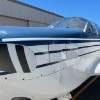


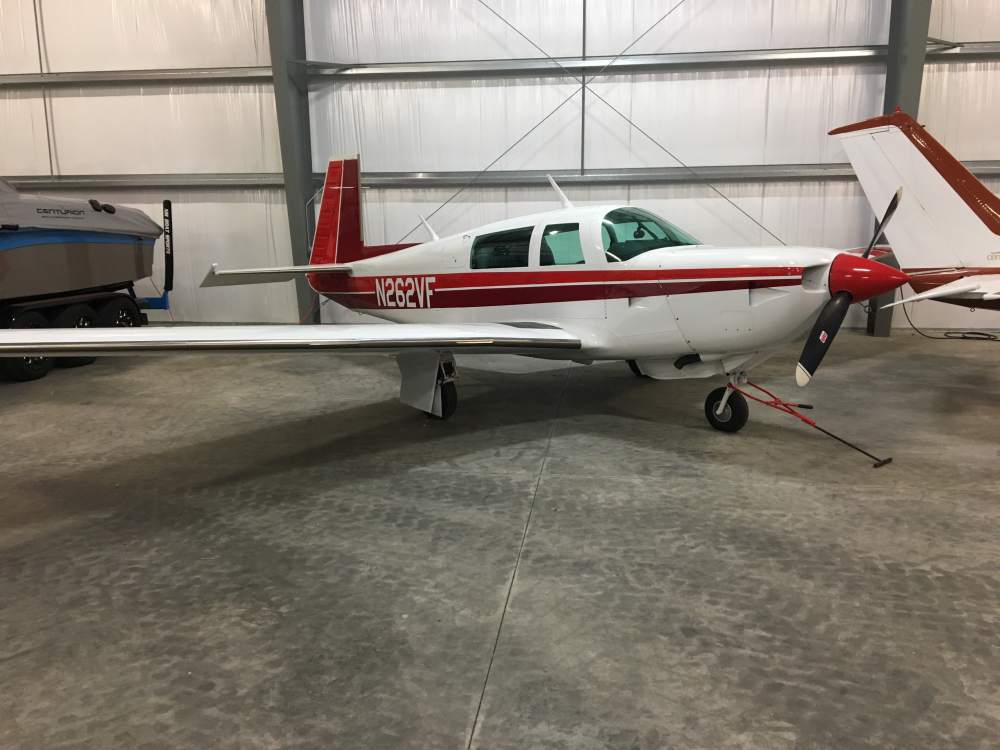
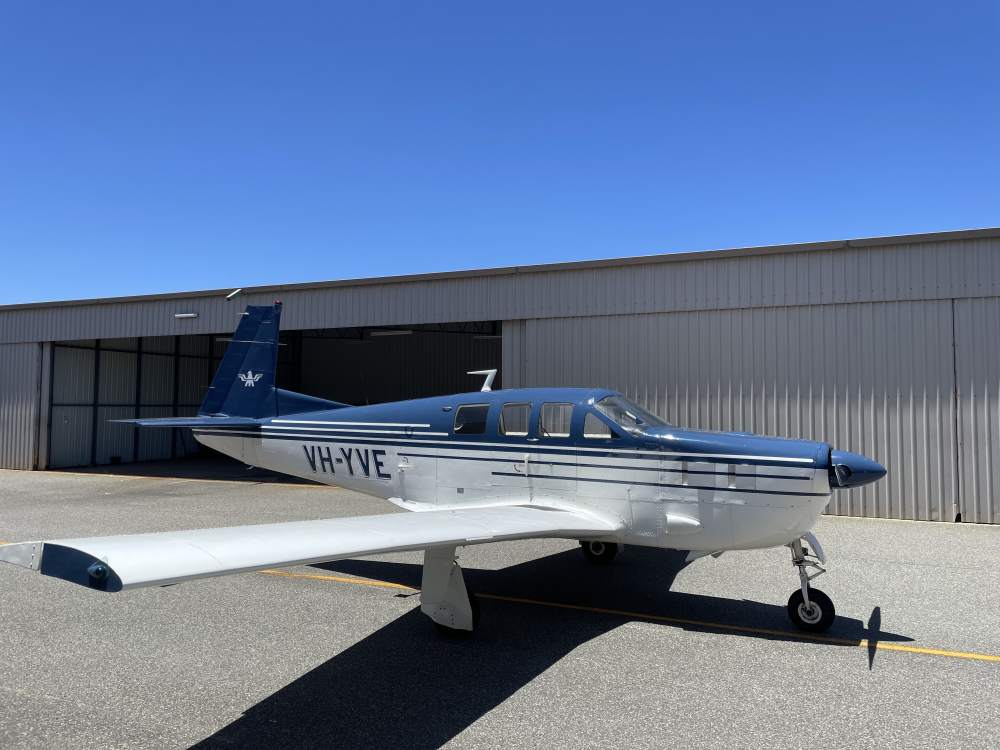
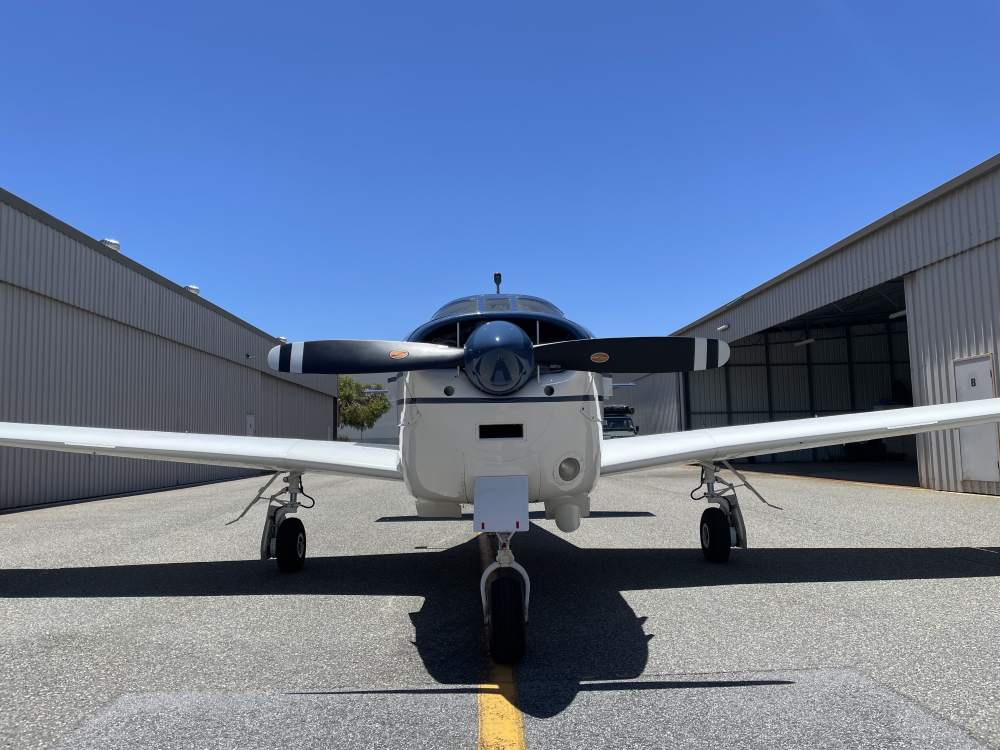

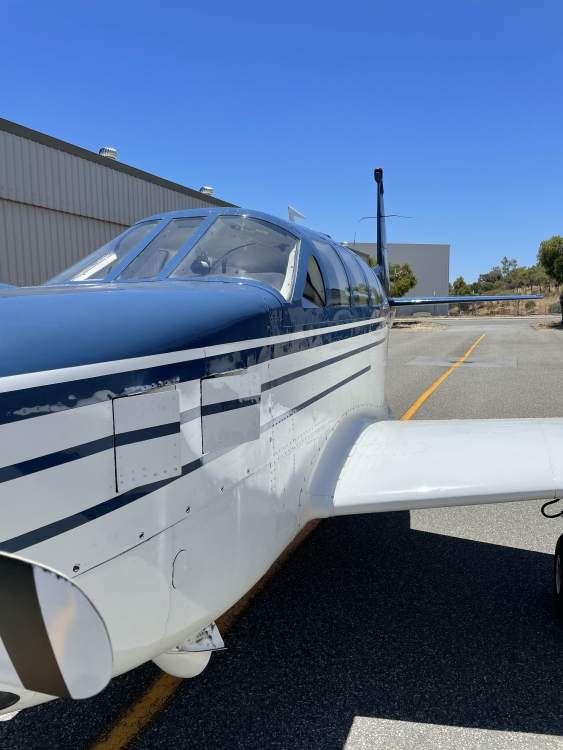
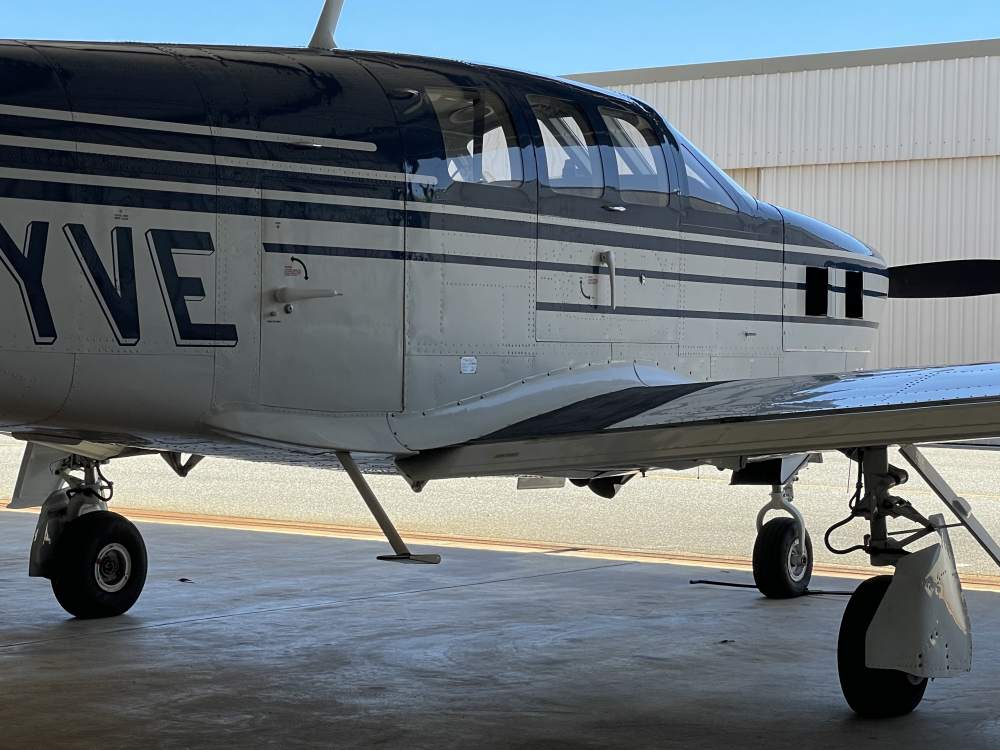

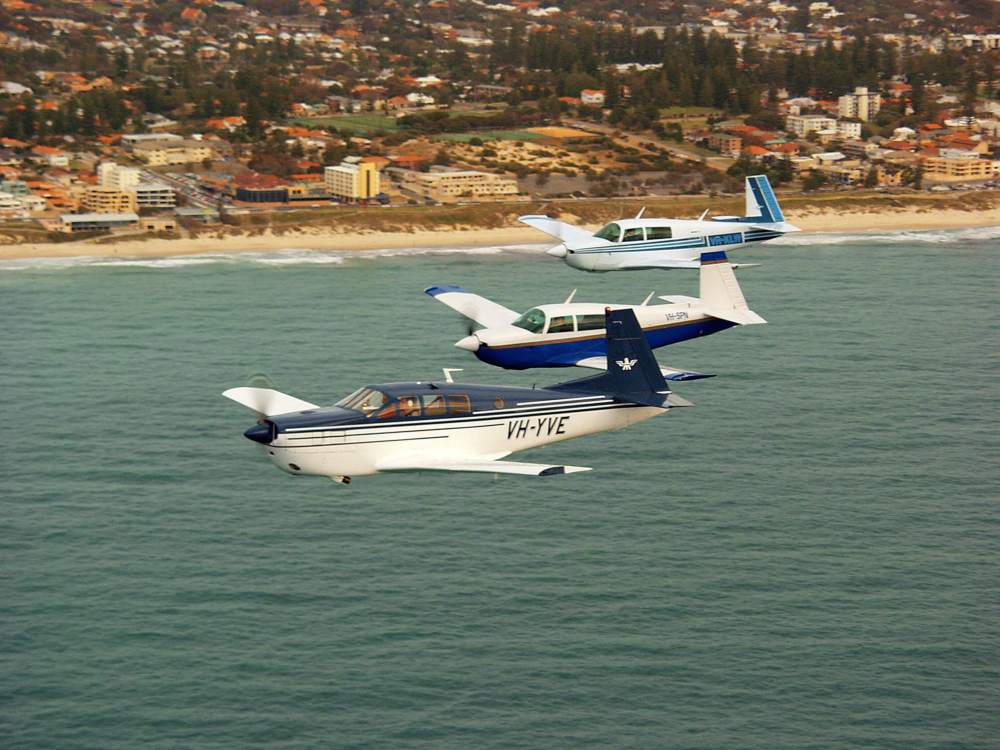
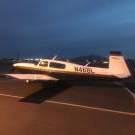





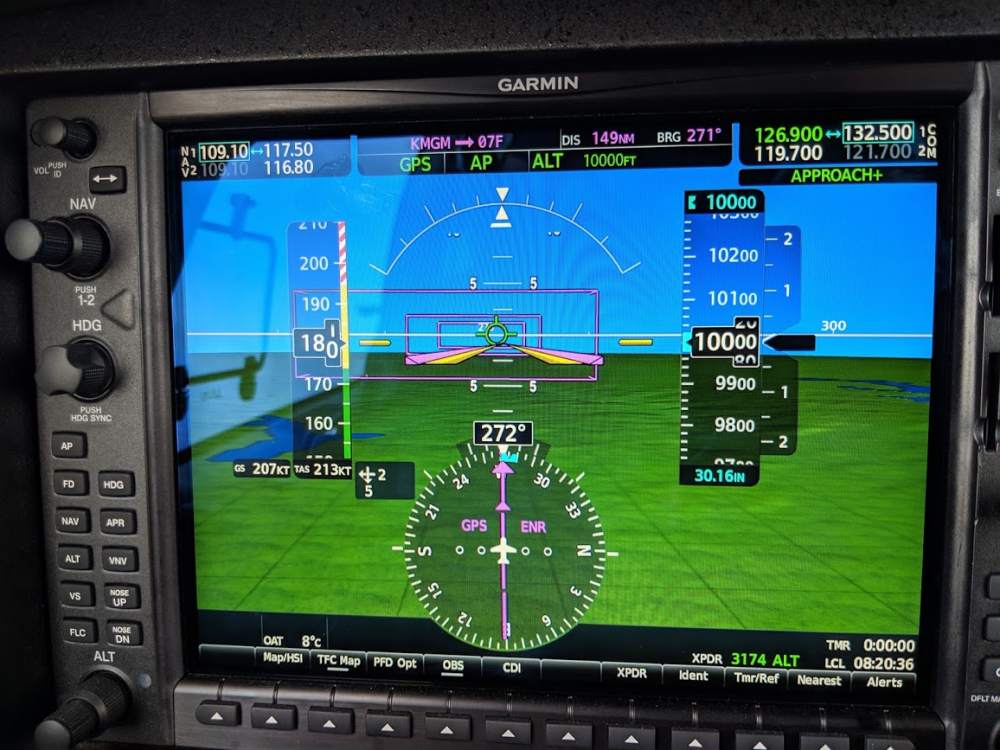


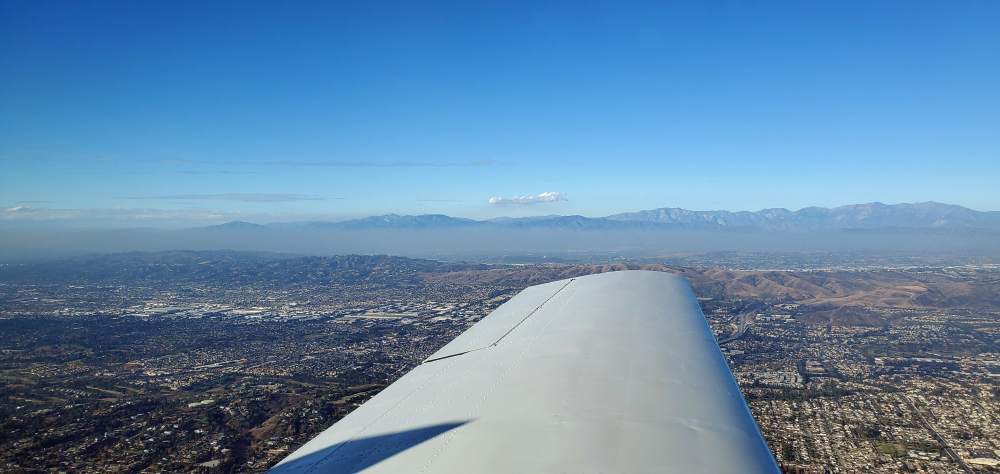
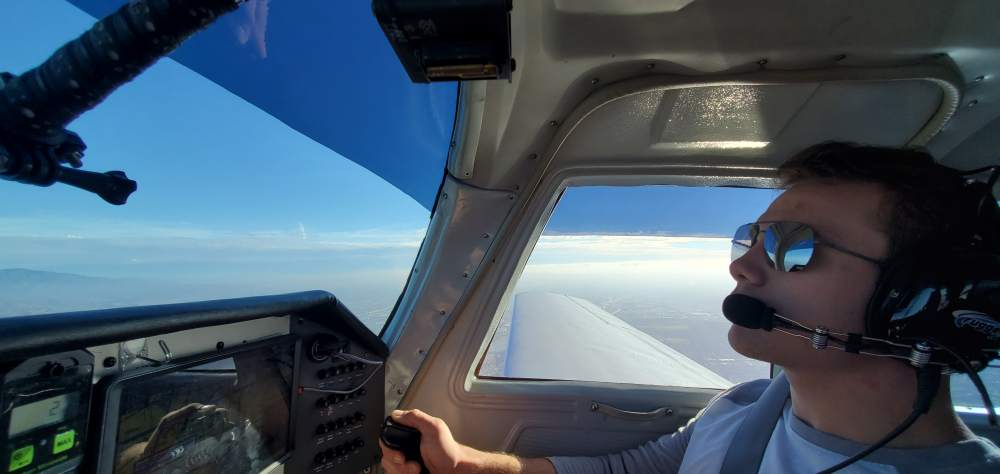






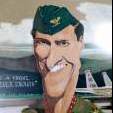

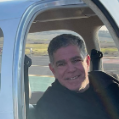

.thumb.jpeg.4fc29295cbe6e76ae2b3789c8da8220a.jpeg)


